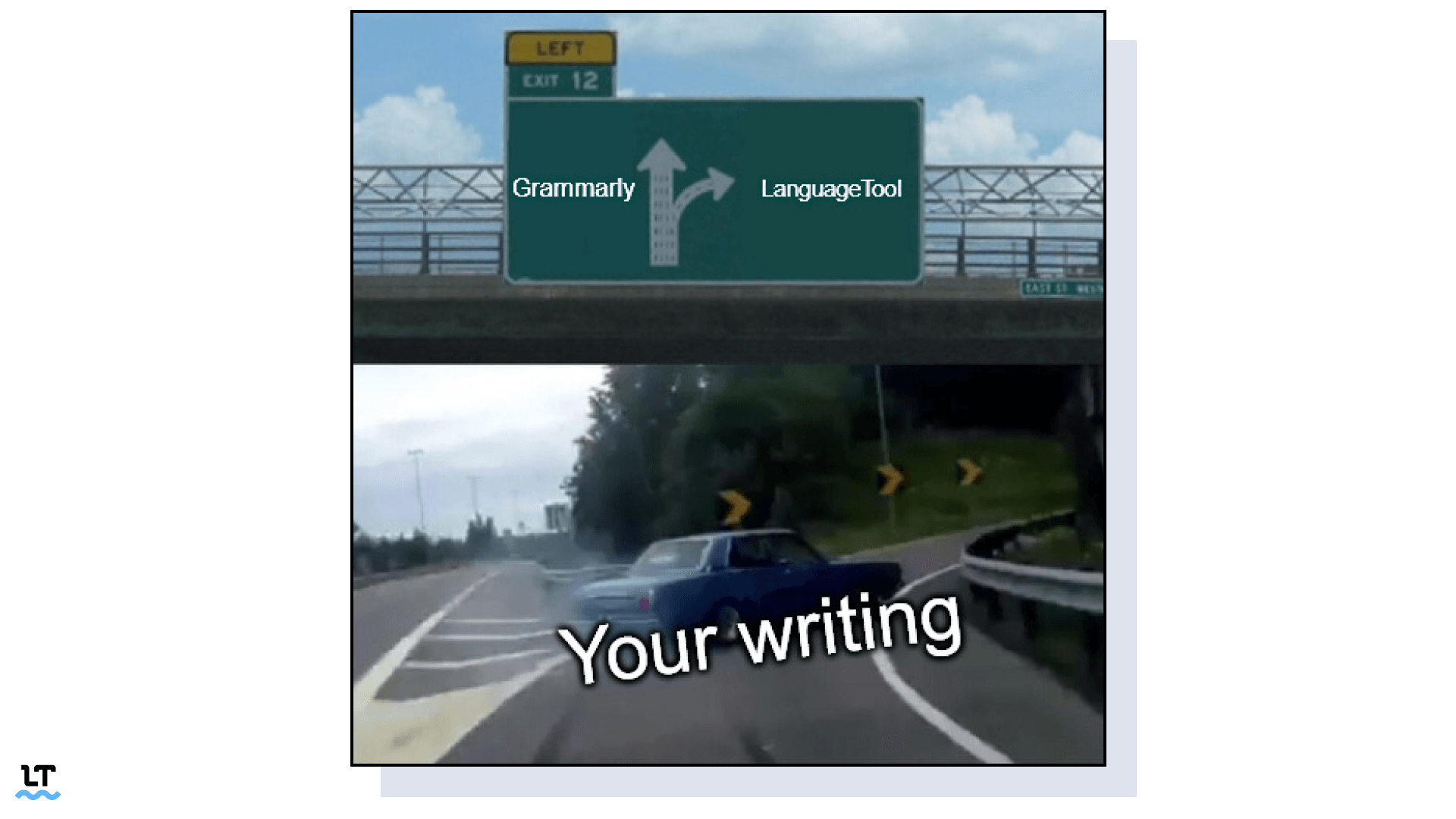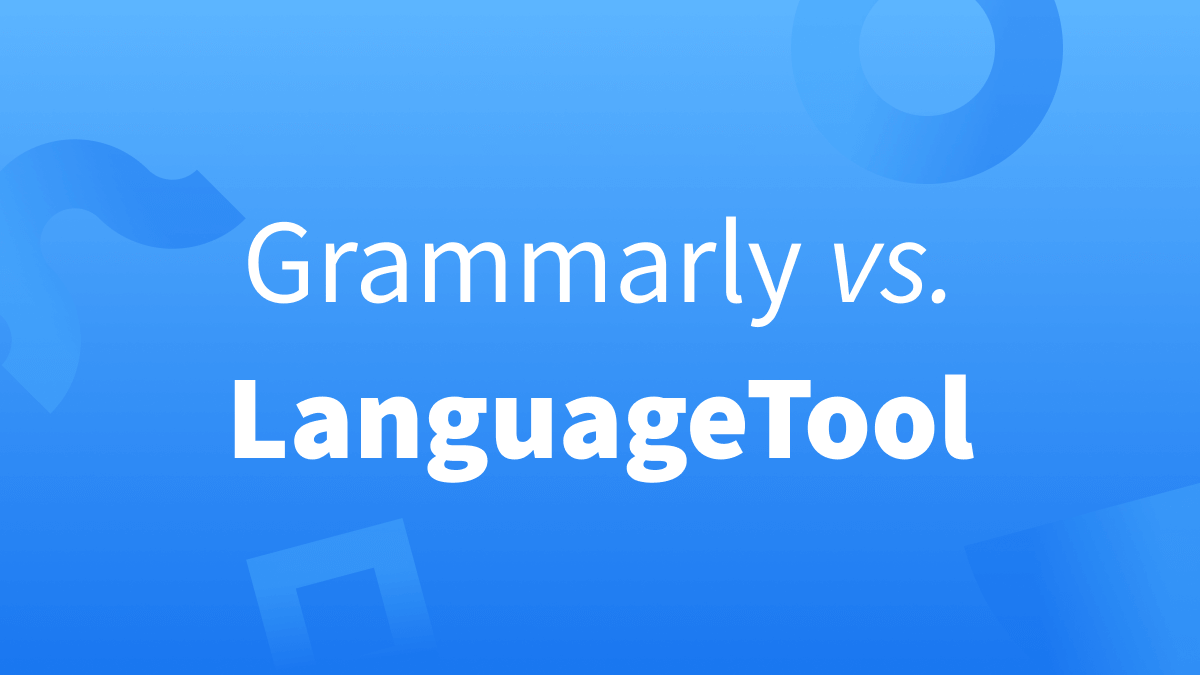Learn in this article, why LanguageTool is better than Grammarly.
- LanguageTool detects more typos than Grammarly.
- LanguageTool’s technology provides assets for every user.
- Grammarly is not as user-friendly as LanguageTool.
- Grammarly only covers the English language.
What are Grammarly and LanguageTool?
At first glance, Grammarly and LanguageTool appear to be largely similar writing assistants. You can use them both as a browser add-on as well as an external editor. Through AI-based spelling corrections and stylistic suggestions, they help you to write impactful and precise texts. Nevertheless, let’s dive into the differences between the two applications. You’ll see that there are four very convincing reasons for choosing LanguageTool over Grammarly.
1. LanguageTool Detects More Typos Than Grammarly
Admittedly, Grammarly identifies the majority of errors that LanguageTool does. However, if you take a closer look, you will see the limits of Grammarly’s correction capabilities. There are some areas of language that seem to be disregarded by the American writing assistant.
LT performs better in regard to recognizing and capitalizing proper names, missing commas and hyphens, and correcting slang. Furthermore, LanguageTool can help avoid “false friends” if your native language is French or German. Here are some examples:
- Capitalization: Apple, Google Sheets, China, Barack Obama
- Commas: In 1960, archeologists found remains of the Norse in Newfoundland.
- Apostrophes: traveler’s check, New Year’s Eve, etc.
- Hyphens: e.g., a 10-story-building
- Slang words: imma
- False friends: I become a baby.
German “bekommen” (to get) directly translated. - Special characters: née vs. nee
The most critical flaw in Grammarly, however, seems to be typos resulting in other (existing) words. For instance, it doesn’t find the spelling mistake in Papa New Guinea, or it confuses add and ad. Idioms and proverbs especially happen to be a challenge for Grammarly.
Let’s have a look at an illustrative example of how LanguageTool works.
2. LanguageTool’s Technology Provides Assets for Every User
Today, collecting personal data means making money with advertisements. Grammarly’s Privacy Policy can’t compete with LanguageTool’s. LanguageTool doesn’t store your writing, it only processes it for improved corrections. On the other hand, Grammarly’s users have to accept that their data is saved on a US-American server. As a European company, LanguageTool has to obey the rules of the General Data Protection Regulation (GDPR) established by the European Union.
Moreover, Grammarly doesn’t cater to every customer’s individual needs in the way LanguageTool does. LanguageTool offers on-premise solutions for enterprises. For these companies, the LanguageTool API is a must-have that Grammarly can’t offer. This API is applicable for all programming languages, as it is HTTP-based and outputs simply structured JSON data.
| Category | LanguageTool | Grammarly |
|---|---|---|
| Desktop apps |
|
|
| E-mail add-ons |
|
|
| Browser add-ons |
|
|
| Office plugins |
|
|
| CMS |
|
|
| API |
✅ |
|
| Mobile apps |
|
|
This broad variety of options appeals to more users, from high school and college students to businesses and professionals using the writing assistant in their everyday lives. Regardless of if you want to use LanguageTool on your own, privately, or as a whole company, you can always try out the free version—the core of which is Open Source—and afterwards upgrade to a premium account. Premium access enables even more functionalities.
3. Grammarly Is Not as User-friendly as LanguageTool
When you use LanguageTool for your everyday writing, you’ll see how user-friendly the interface is. Thanks to the synonym function, you can improve your text even when all corrections and style suggestions have been addressed. By double-clicking on nearly any word, LanguageTool shows you various alternatives.
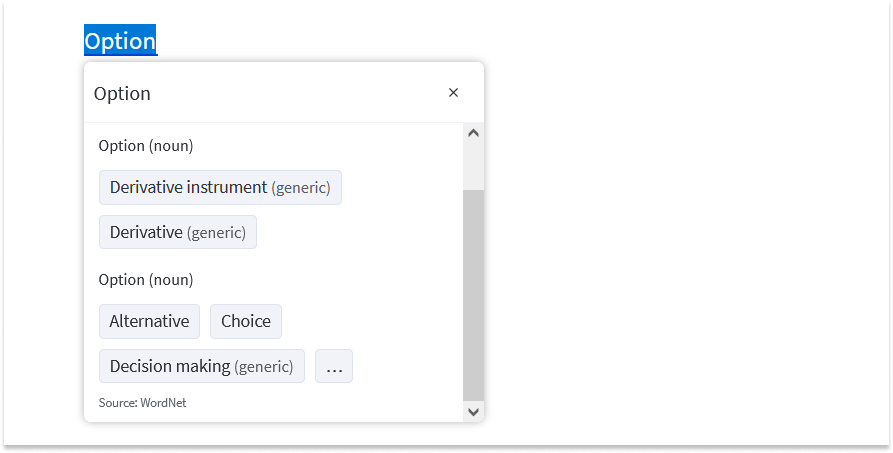
Besides the valuable help for writing impressive texts, the synonym function can enrich your personal vocabulary. If you want to mention a proper name or a technical term that no dictionary has ever heard of, that is no problem for LanguageTool either. You always have the option of disregarding suggestions on purpose, and adding words to your personal dictionary.
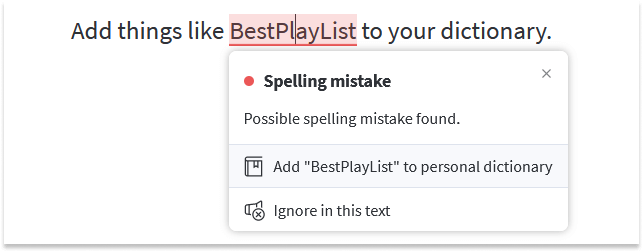
Another difference is the possibility for you to get explanations along with the corrections. While Grammarly offers a few sentences by clicking inside the error card, LanguageTool refers to whole articles concerning the requested information. In some cases, it forwards you to interesting and easy-to-understand instructions in this blog. LanguageTool doesn’t just correct your error, but also gives you an explanation, so you understand the reason behind it. You know what they say: Teach a man (or woman) to fish, and you feed him or her for an entire lifetime.
4. Grammarly Only Covers the English Language
What clearly sets LanguageTool apart is the range of languages. Grammarly only offers corrections for one language: English. LanguageTool, on the other hand, helps you write in over 20 languages (including French, Spanish, German, Portuguese, Polish, Dutch, and Russian).
Even if you’re not bilingual or currently learning one of these languages, you may want to include some phrases or quotes in a language other than English. LanguageTool ensures that your English text is spotless, but it also checks anything that you've written in a foreign language as well.
In regard to dialects of English, Grammarly covers four major standard varieties: British English, American English, Canadian English, and Australian English. LanguageTool covers them, too. But, you can even choose between New Zealand English and South African English. For speakers of British dialects, it also supports both standard languages, British Standard English and Oxford Standard. As you can see, LT has a wider range of possible dialects to choose from.
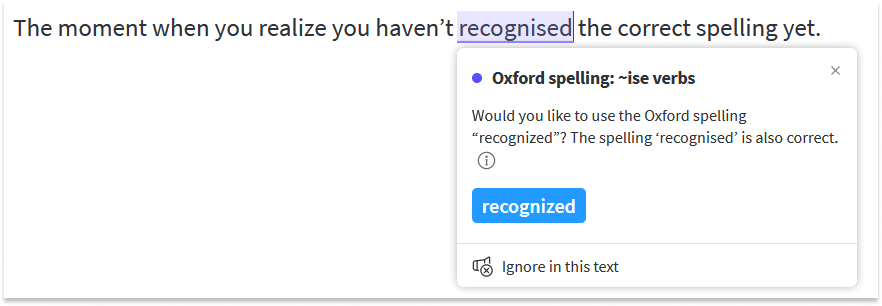
The Reasons Why LanguageTool is Better Than Grammarly
In short, LanguageTool does not only check your texts more efficiently, it is more committed to respecting your personal data. Furthermore, users have more options for individual settings, and it works in other world languages, too. Make sure you take advantage of the following opportunities:
- HTTP-API & open-source for developers and integrators
- Usability in various programs and apps (Add-on, Mac App, Windows, iOS)
- Personal dictionary
- Synonyms
- Background information in this blog
- Over 20 languages and more dialects of English
Last but not least: LanguageTool’s pricing is also better than Grammarly’s. With a choice of a monthly or a yearly plan, only Grammarly’s annual payment plan provides you with a price advantage. LanguageTool, on the other hand, offers more benefits in its free version, and gives you a wider choice of subscription lengths for its premium plans. Visit the pricing page for more information.
Please note—this article was written in August 2021. Changes in Grammarly’s performance may occur in the future.
